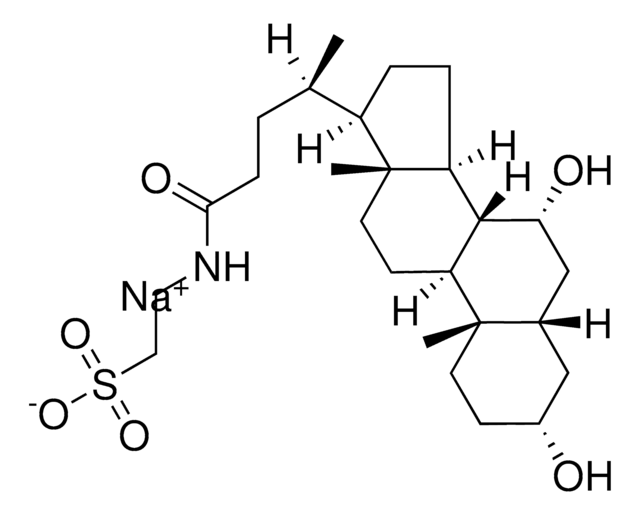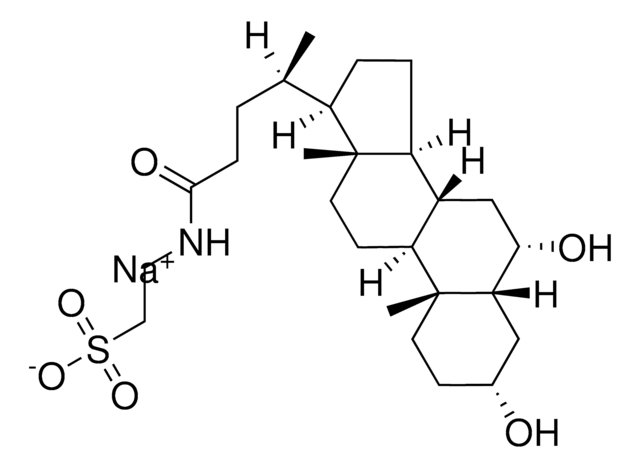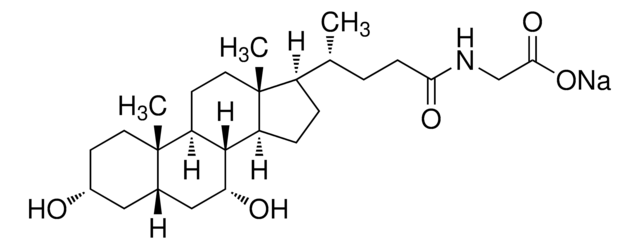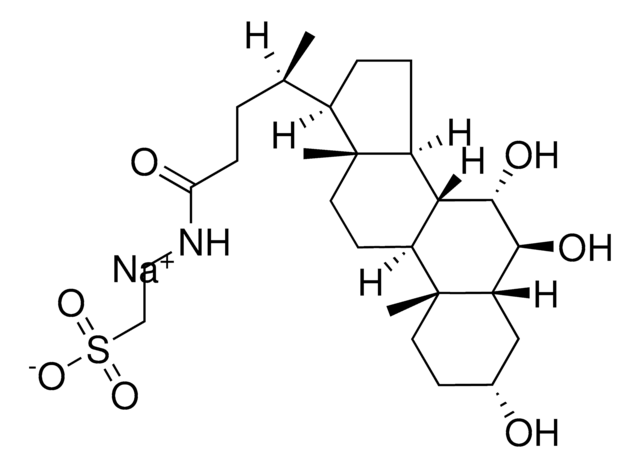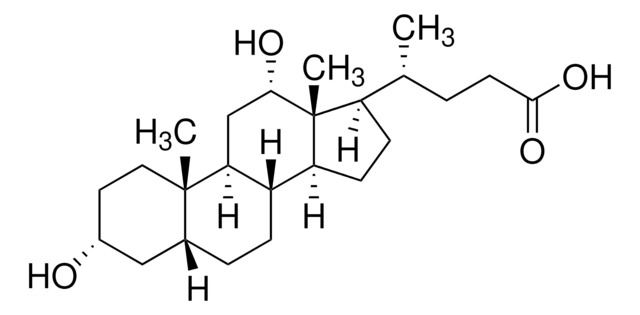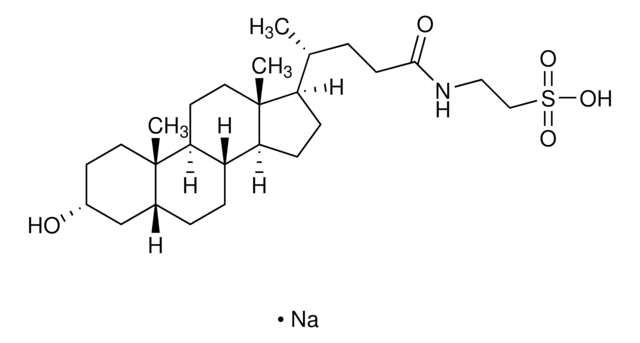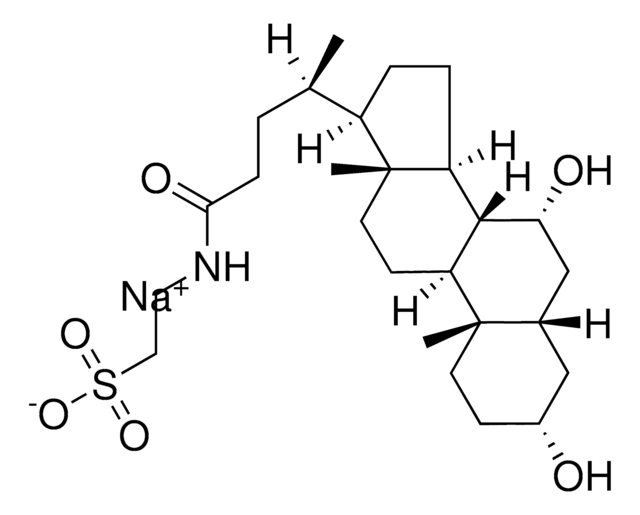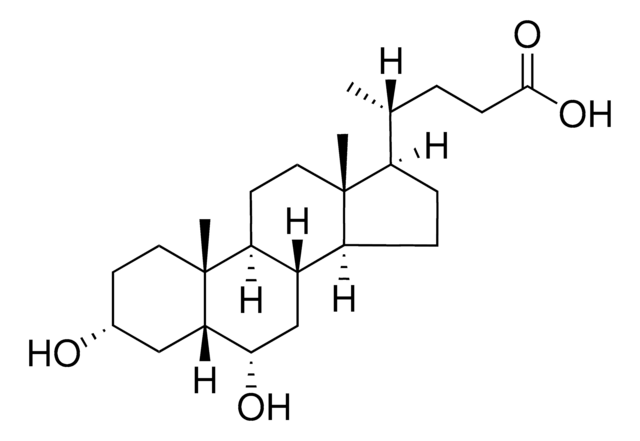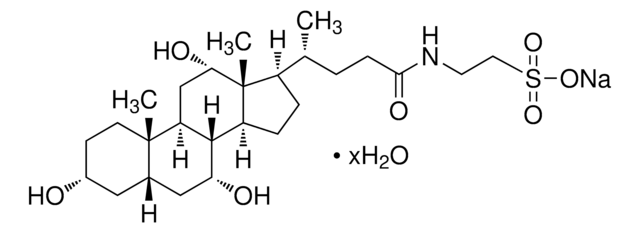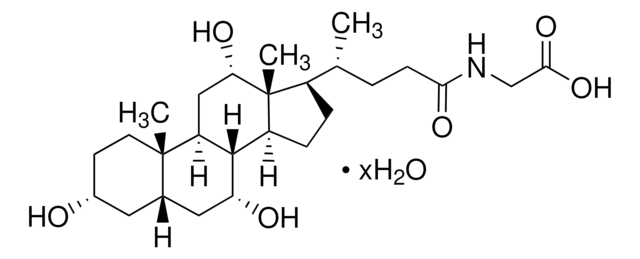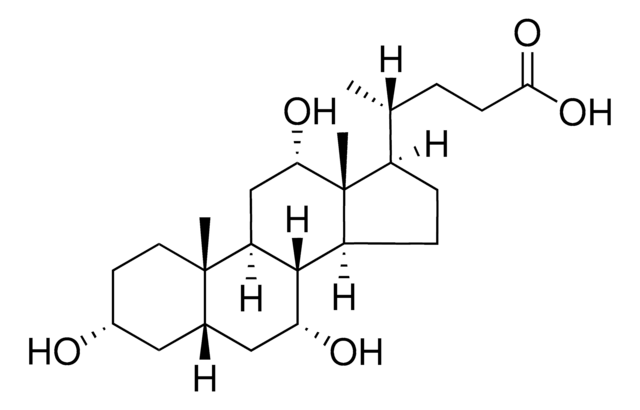T0682
Sodium taurohyodeoxycholate hydrate
≥98%
Synonyme(s) :
Taurohyodeoxycholic acid sodium salt hydrate
About This Item
Produits recommandés
Description
anionic
Niveau de qualité
Essai
≥98%
Poids mol.
521.69 g/mol (anhydrous basis)
Application(s)
detection
Chaîne SMILES
O.[Na+].C[C@H](CCC(=O)NCCS([O-])(=O)=O)[C@H]1CC[C@H]2[C@@H]3C[C@H](O)[C@@H]4C[C@H](O)CC[C@]4(C)[C@H]3CC[C@]12C
InChI
1S/C26H45NO6S.Na.H2O/c1-16(4-7-24(30)27-12-13-34(31,32)33)19-5-6-20-18-15-23(29)22-14-17(28)8-10-26(22,3)21(18)9-11-25(19,20)2;;/h16-23,28-29H,4-15H2,1-3H3,(H,27,30)(H,31,32,33);;1H2/q;+1;/p-1/t16-,17-,18+,19-,20+,21+,22+,23+,25-,26-;;/m1../s1
Clé InChI
MJKUJELEPWZEGU-IGEKTTBWSA-M
Catégories apparentées
Description générale
Application
Code de la classe de stockage
11 - Combustible Solids
Classe de danger pour l'eau (WGK)
WGK 3
Point d'éclair (°F)
Not applicable
Point d'éclair (°C)
Not applicable
Faites votre choix parmi les versions les plus récentes :
Déjà en possession de ce produit ?
Retrouvez la documentation relative aux produits que vous avez récemment achetés dans la Bibliothèque de documents.
Les clients ont également consulté
Notre équipe de scientifiques dispose d'une expérience dans tous les secteurs de la recherche, notamment en sciences de la vie, science des matériaux, synthèse chimique, chromatographie, analyse et dans de nombreux autres domaines..
Contacter notre Service technique